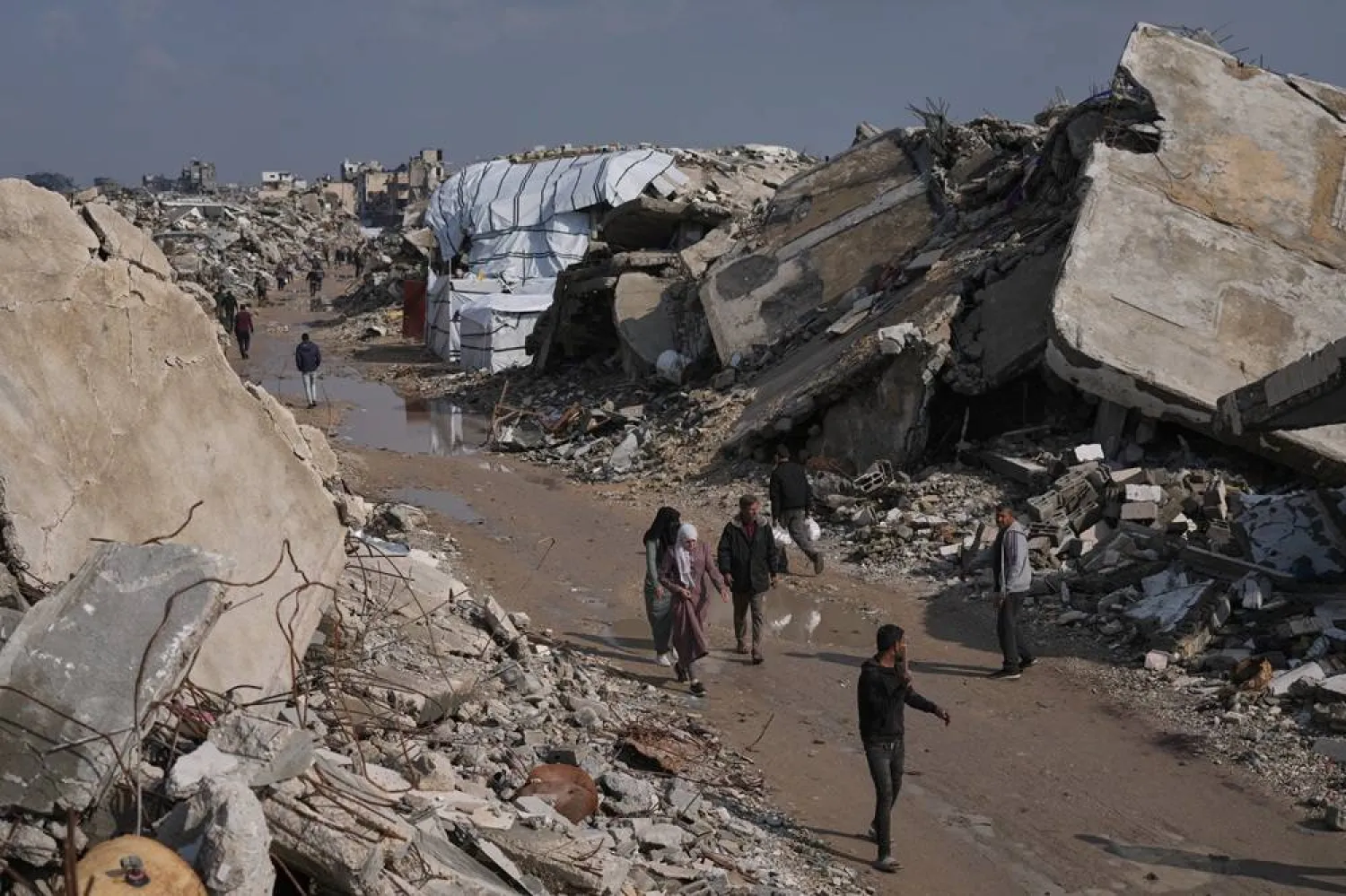Israeli strikes across Gaza killed at least 92 people, including women, children and a local journalist, officials said Wednesday, as Israel prepares to ramp up its campaign in the strip, with the devastating war now entering its 20th month.
Two Israeli airstrikes on Wednesday in central Gaza killed at least 33 people and wounded 86, including several children, though the actual death toll is likely higher, according to health officials.
The Israeli military had no immediate comment on the strikes.
The new bloodshed comes days after Israel approved a plan to intensify its operations in the Palestinian enclave, which would include seizing Gaza, holding on to captured territories, forcibly displacing Palestinians to southern Gaza and taking control of aid distribution along with private security companies.
Israel is also calling up tens of thousands of reserve soldiers to carry out the plan. Israel says the plan will be gradual and will not be implemented until after US President Donald Trump wraps up his visit to the region later this month.
Any escalation of fighting would likely drive up the death toll. And with Israel already controlling some 50% of Gaza, increasing its hold on the territory, for an indefinite amount of time, could open up the potential for a military occupation, which would raise questions about how Israel plans to have the territory governed, especially at a time when it is considering how to implement Trump’s vision to take over Gaza.
The Israeli offensive has so far killed more than 52,000 people in Gaza, many of them women and children, according to Palestinian health officials who do not distinguish between combatants and civilians.
Israel blames Hamas for the death toll, saying it operates from civilian infrastructure, including schools.
Strikes target crowds in Gaza City
Wednesday's strikes included two attacks on a crowded market area in Gaza City, health officials said.
Footage posted online reportedly showed the aftermath with men found dead, including one still seated in a chair inside a Thai restaurant, used by locals as a gathering spot, and several children lying motionless on the ground, covered in blood.
Journalist Yahya Sobeih, who freelanced for several local outlets, was among those killed, according to Gaza’s media office. He had shared a photo on Instagram of his newborn baby girl.
Victims of the blasts, some with severe injuries, were taken to nearby Al-Shifa Hospital, Gaza health ministry spokesperson Zaher al-Wahidi told The Associated Press.
An attack Tuesday night on a school sheltering hundreds of displaced Palestinians killed 27 people, officials from the Al-Aqsa Hospital said, including nine women and three children. The school has been struck repeatedly since the war began. Earlier, a strike on another school turned shelter in Gaza City killed 16 people, according to officials at Al-Ahli Hospital, while strikes in other areas killed at least 16 others.
In Bureij, an urban refugee camp, paramedics and rescuers rushed to pull people out of a blaze after a large column of smoke and fires pierced the dark skies above the school shelter.
Trump jars Israelis with remark on hostage figures
The war began when Hamas-led fighters attacked southern Israel, killing 1,200 people and taking about 250 hostages.
Trump on Tuesday stunned many in Israel when he declared that only 21 of the 59 hostages remaining in Gaza are still alive. Israel insists the figure stands at 24, although an Israeli official said there was “serious concern” for the lives of three captives.
The official said there has been no sign of life from those three, whom the official did not identify. He said that until there is evidence proving otherwise, the three are considered to be alive.
The official, who spoke on condition of anonymity to discuss sensitive details related to the war, said the families of the captives were updated on those developments.
The Hostages and Missing Families Forum, a group representing the families of the captives, demanded from Israel's government that if there is “new information being kept from us, give it to us immediately.”
It also called for Israeli Prime Minister Benjamin Netanyahu to halt the war in Gaza until all hostages are returned. “This is the most urgent and important national mission,” it said on a post on X.
Since Israel ended a ceasefire with the Hamas group in mid-March, it has unleashed fierce strikes on Gaza that have killed hundreds and captured swaths of territory. Before the truce ended, Israel halted all humanitarian aid into the territory, including food, fuel and water, setting off what is believed to be the worst humanitarian crisis in 19 months of war.
Key interlocutors Qatar and Egypt said Wednesday that mediation efforts were “ongoing and consistent.” But Israel and Hamas remain far apart on how they see the war ending. Israel says it won't end the war until Hamas' governing and military capabilities are dismantled, something it has failed to do in 19 months of war.
Hamas says it is prepared to release all of the hostages for an end to the war and a long-term truce with Israel.










